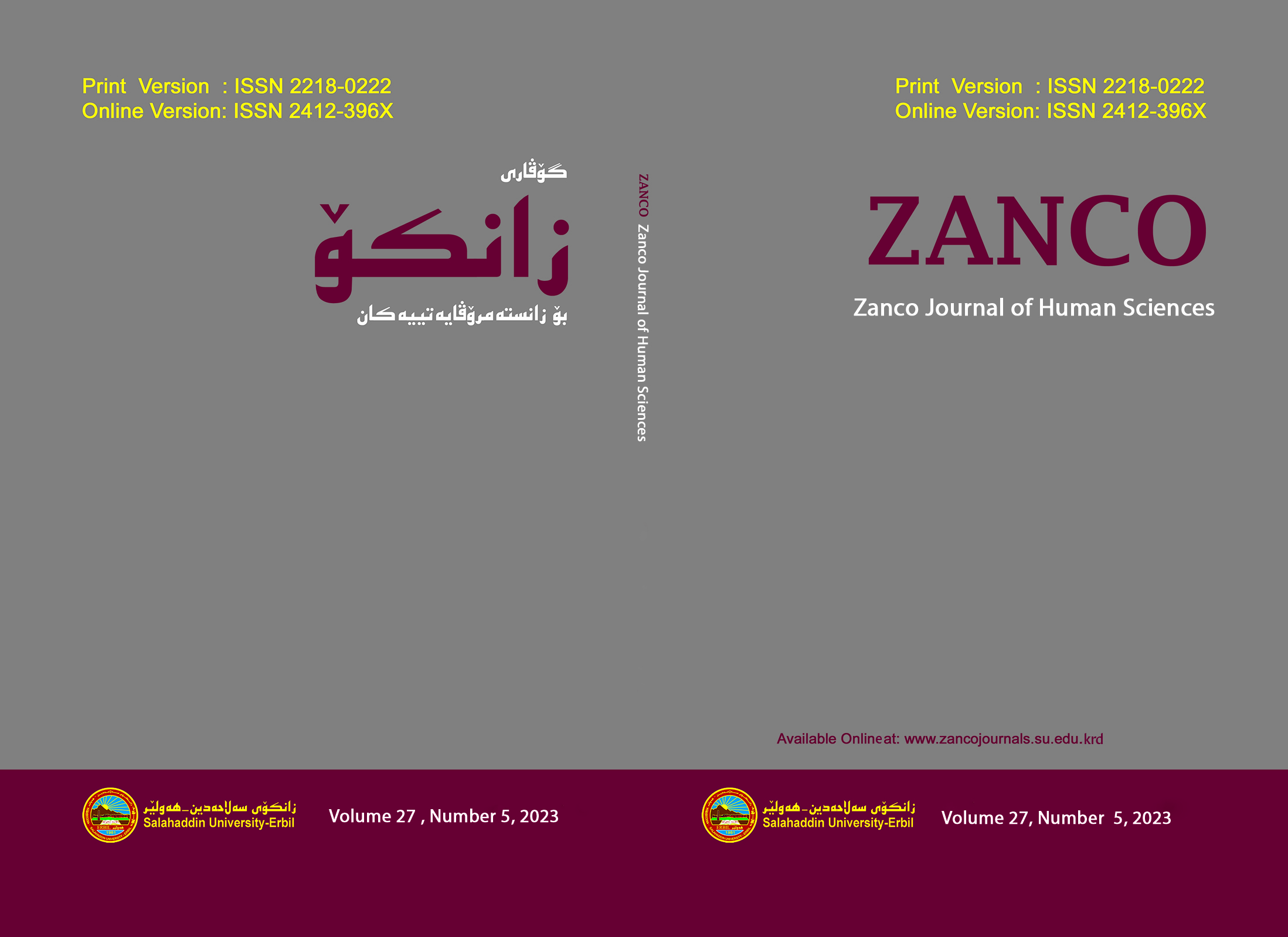The Role of Perspective Schematic System in Meaning Construction in Khushwant Singh’s Train to Pakistan
DOI:
https://doi.org/10.21271/zjhs.27.5.17Keywords:
Cognitive semantics, perspective system, closed-class subsystem, referent entity, scene conceptualisation.Abstract
The paper examines Perspective Schematic System as one of the five constituting concept structuring categories to find out what is the role of this system in meaning construction process, especially at sentence level. It also attempts to know why, when and how the speakers resort to the components of this system in discourse. The study data is taken from Khushwant Singh’s Train to Pakistan novel and analysed within Talmy’s perspective schematic system model via using introspection method. The analysis showed that this system is pervasive in present and past tenses sentences, and compound, aspectually completed and progressive sentences. Also in organising the structure of the content meanings provided by the open-class subsystem, the majority of the sentences inevitably require this system to construct their meaning. The study has concluded that all the categories of this system are expressed by closed-class subsystem, grammar. The study has also come to the conclusion that this system categories are resorted to when speakers would like to or have to select how to mentally conceptualise and scan a scene or the referent entity in terms of location, distance, mode and direction of viewing among category member options. And then depicted it in language via closed-class subsystem for a situationally and contextually intended purpose.
References
• Croft, W., 2002. Radical Construction Grammar: Syntactic Theory in Typological Perspective. Oxford: Oxford University Press.
• Croft, W. and Cruse, D. A., 2004. Cognitive Linguistics. Cambridge: Cambridge University Press.
• Evans, V. and Green, M., 2006. Cognitive Linguistics: An Introduction. Scotland: Edinburgh University Press Ltd.
• Heidegger, M., 1962. Being and time. Translation form German by J. Macquarrie and E. Robinson. New York: Harper and Row.
• Hühn, P., Schmid, W. and Schönert, J., 2009. Point of View, Perspective, and Focalization: Modeling Mediation in Narrative. Germany: Walter de Gruyter.
• Singh, K., 1956. Train to Pakistan. London: Chatto and Windus.
• Talmy, L., 2000a. Toward a Cognitive Semantics, Volume1: Concept structuring systems. Cambridge, MA: MIT Press.
• Talmy, L., 2006. A windowing onto conceptual structure and language Part 2: Language and cognition: Past and future. Annual Review of Cognitive Linguistics, 4(1), pp. 253-268.
• Zubin, D. and Lynne E. H., 1995. The deictic center: A theory of deixis in narrative. In: J. Duchan, G. Bruder & L. Hewitt, eds. Deixis in narrative. Hillsdale, N.J.: Erlbaum.
Downloads
Published
How to Cite
Issue
Section
License
Copyright (c) 2023 Nabaz Ismael Hamad

This work is licensed under a Creative Commons Attribution-NonCommercial-ShareAlike 4.0 International License.
Except where otherwise noted, content on this site is licenced
under a Creative Commons Attribution License 4.0 (CC BY- 4.0)










